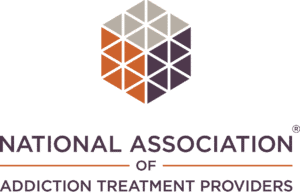Effective Ways to Detox from Marijuana: A Comprehensive Guide by Silicon Valley Recovery
In a world where marijuana is increasingly legalized, it’s essential to understand the need for effective detoxification methods, especially for individuals seeking a fresh start. Marijuana detox is a crucial step towards reclaiming control over one’s life, and at Silicon Valley Recovery, we are committed to providing comprehensive addiction treatment tailored to individual needs. In this guide, we’ll explore various strategies on how to detox from marijuana, shedding light on the importance of a holistic approach to recovery.
Understanding Marijuana Detox
What is Marijuana Detox?
Marijuana detoxification is the process of eliminating THC (tetrahydrocannabinol), the psychoactive compound in marijuana, from the body. THC tends to accumulate in fatty tissues, making detoxification challenging but not impossible. The body’s ability to naturally eliminate THC is a slow process, but with the right strategies, individuals can expedite the removal of toxins from their system.
Why Choose Marijuana Detox?
Whether you’re aiming to pass a drug test, mitigate withdrawal symptoms, or embark on a journey toward complete sobriety, marijuana detox is the first step. It sets the stage for a successful recovery by clearing the mind and body of residual THC, paving the way for a healthier, more balanced life.
How to Detox from Marijuana
Gradual Reduction Method
Overview
A gradual reduction approach involves slowly tapering marijuana use, allowing the body to adjust to decreasing THC levels. This method minimizes withdrawal symptoms and provides a smoother transition to sobriety.
Steps
- Set a Schedule: Create a realistic schedule for reducing marijuana consumption over several weeks.
- Monitor Progress: Keep a journal to track daily marijuana intake and gradually decrease the dosage.
- Seek Support: Share your goals with friends, family, or a support group to build a network that understands and encourages your journey.
Hydration and Nutrition
Overview
Proper hydration and nutrition play a crucial role in marijuana detoxification. Drinking water and consuming nutrient-rich foods help flush toxins from the body and support overall health during the detox process.
Steps
- Increase Water Intake: Aim for at least eight glasses of water daily to help flush THC metabolites through urine.
- Nutrient-Rich Diet: Incorporate fruits, vegetables, and lean proteins to provide essential vitamins and minerals that aid in detoxification.
- Herbal Teas: Certain herbal teas, like dandelion or green tea, possess detoxifying properties that can support the cleansing process.
Exercise and Sweating
Overview
Exercise accelerates the metabolism and promotes sweating, which is beneficial for expelling THC from the body. Regular physical activity also helps manage stress and improve mood during the detoxification period.
Steps
- Cardiovascular Exercise: Engage in activities like running, cycling, or swimming to increase heart rate and stimulate the metabolism.
- Sauna Sessions: Saunas induce sweating, aiding in the elimination of toxins through the skin. Regular sauna sessions complement the detox process.
- Mindful Movement: Practices like yoga or tai chi not only contribute to physical well-being but also help alleviate stress and anxiety.
Supervised Detox Programs
Overview
For those seeking professional guidance, supervised detox programs, such as those offered at Silicon Valley Recovery, provide a structured and supportive environment for marijuana detoxification.
Steps
- Assessment: Begin with a comprehensive assessment to understand individual needs and develop a personalized detox plan.
- Medical Monitoring: Trained professionals monitor the detox process, ensuring the safety and well-being of individuals throughout their journey.
- Therapeutic Support: Incorporate counseling, therapy, and group sessions to address the psychological aspects of addiction and provide tools for lasting recovery.
Silicon Valley Recovery’s Approach
At Silicon Valley Recovery, we recognize that each individual’s journey to recovery is unique. Our comprehensive addiction treatment programs encompass a range of evidence-based approaches tailored to meet specific needs. Here’s how our approach aligns with effective marijuana detox:
Personalized Treatment Plans
Our experienced team conducts thorough assessments to understand the unique challenges and goals of each individual. By crafting personalized treatment plans, we address the physical, emotional, and psychological aspects of marijuana detox.
Medical Supervision
Silicon Valley Recovery prioritizes the safety and well-being of our clients. Our medical professionals closely monitor the detox process, ensuring a comfortable and secure environment for individuals as they embark on their recovery journey.
Therapeutic Modalities
Understanding that detoxification is not solely a physical process, our programs incorporate various therapeutic modalities. Individual and group counseling, cognitive-behavioral therapy, and holistic approaches contribute to a well-rounded treatment experience.
Aftercare Support
The journey to recovery extends beyond the initial detoxification phase. Silicon Valley Recovery provides robust aftercare support to help individuals maintain sobriety and navigate the challenges of daily life post-treatment.
Embarking on the path to marijuana detox requires commitment, support, and effective strategies. Whether choosing a gradual reduction method, incorporating lifestyle changes, or seeking professional help, the goal is to achieve a healthier, more fulfilling life free from the constraints of marijuana dependence. At Silicon Valley Recovery, we are dedicated to guiding individuals through this transformative journey, offering a comprehensive approach that fosters lasting recovery and a brighter future. If you or a loved one is ready to take the first step towards a marijuana-free life, contact Silicon Valley Recovery today for compassionate and personalized addiction treatment.












